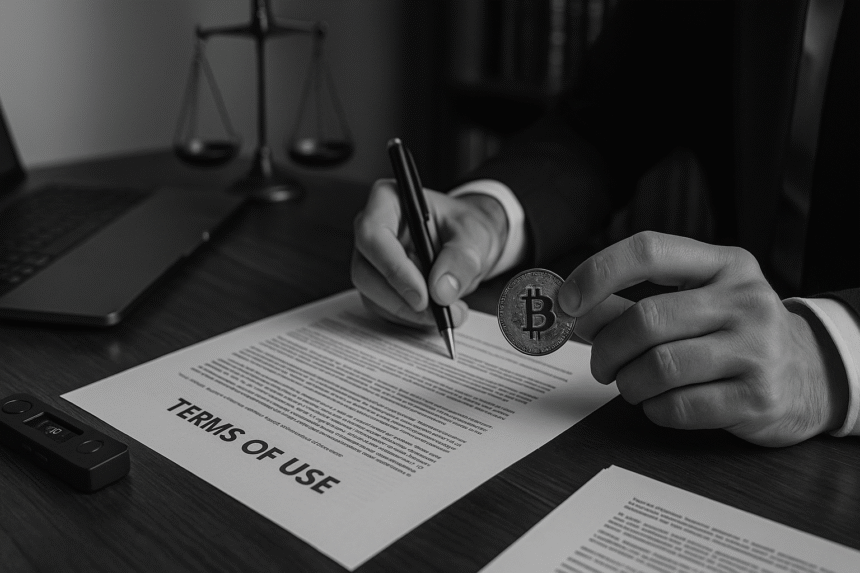How to Draft Terms of Use for a Crypto Wallet Application
Why the Terms of Use for a Crypto Wallet Application Matter More Than You Think
A Legal Perspective for Founders Building the Future of Finance
Introduction: “Standard Terms” Don’t Work as Terms of Use for a Crypto Wallet Application
If you’re building a crypto wallet app, you’re likely focused on UX, encryption, and smart contracts. But your terms of use for a crypto wallet application might be the most critical asset to protect your business and your users.
I’ve worked with fintech and Web3 startups that rushed their legal documents. Many use templates that don’t reflect the reality of digital asset custody, jurisdictional risk, or smart contract interaction. But terms of use go far beyond a disclaimer. They define liability, user rights, dispute mechanisms, and your exposure to regulatory audits.
What Most Founders Get Wrong About the Terms of Use for a Crypto Wallet Application
Two big mistakes commonly occur:
-
Borrowing generic SaaS terms that don’t address crypto-specific risks like private key custody or gas fees.
-
Treating terms of use as a low-priority launch item—until something goes wrong.
This approach invites trouble. Poorly written terms of use for a crypto wallet application can leave your business legally exposed to lawsuits, regulatory penalties, and reputational damage.
Strategic Drafting: Build Your Terms of Use Like a Product Feature
1. Clarify Risk Ownership
Clearly define user responsibilities and where your liability ends. The terms should state that users interact with third-party protocols at their own risk.
2. Set Jurisdiction Rules
Cross-border crypto use makes legal clarity vital. Your terms should specify governing law, arbitration venue, and whether class action waivers apply.
3. Include Conduct Expectations
Go beyond “no illegal use.” The terms must prohibit wallet misuse, including phishing, sanctioned payments, and deceptive transfers.
Real Example: Legal Blowback from Missing Clauses in the Terms of Use for a Crypto Wallet Application
A client’s non-custodial wallet faced a lawsuit when users lost funds through leveraged farming. Their terms of use for a crypto wallet application didn’t specify the wallet’s limits or clarify smart contract risk. A single risk clause in the terms could have avoided legal costs and brand damage.
Can’t I Just Use a Template
Templates are helpful—but insufficient. Regulators, investors, and courts will all look at your terms of use for a crypto wallet application if something goes wrong. Generic clauses won’t hold up to scrutiny. You must tailor your terms of use for a crypto wallet application to reflect your app’s features, risk model, and jurisdiction.
Key Takeaways: Strengthen Your Startup with Clear Terms
If you’re serious about scaling a secure and compliant wallet app:
-
Use the terms as part of your core legal infrastructure
-
Identify risk-bearing parties clearly
-
Customize clauses for DeFi, smart contracts, and regulatory scope
-
Treat legal UX like product UX
Well-crafted terms of use for a crypto wallet application protect your growth, your team, and your users.



Leave a Reply